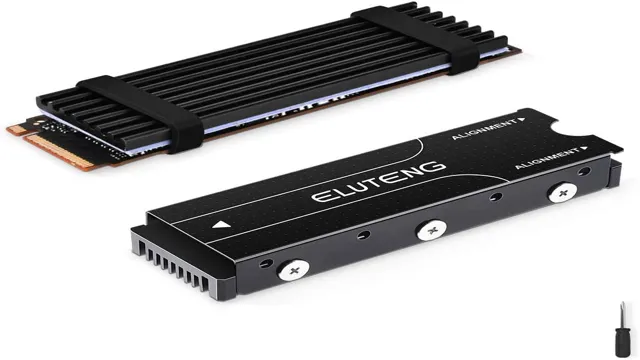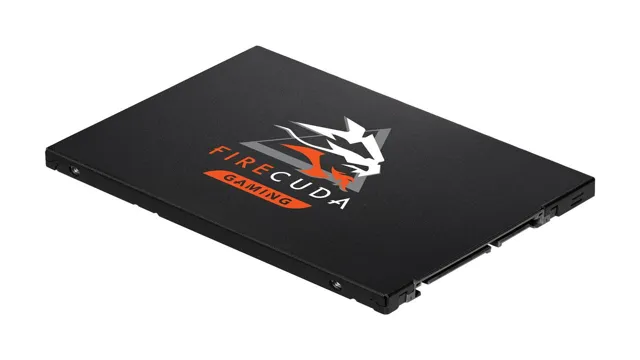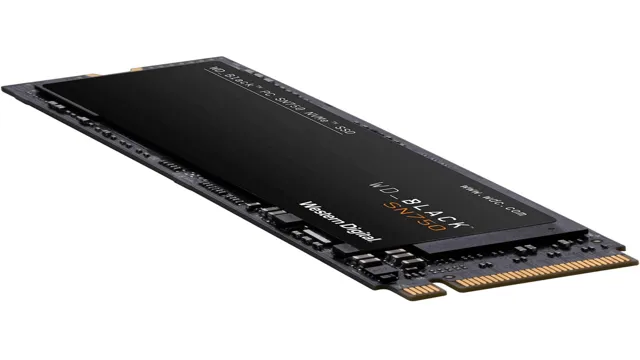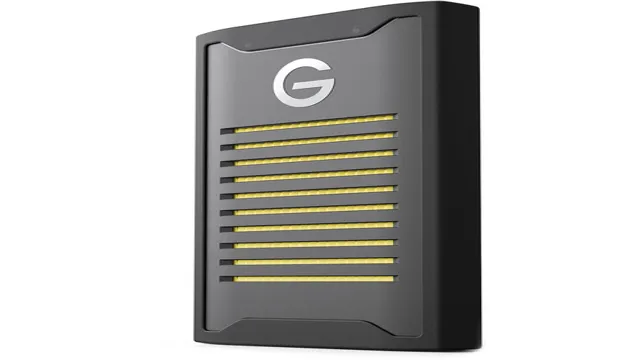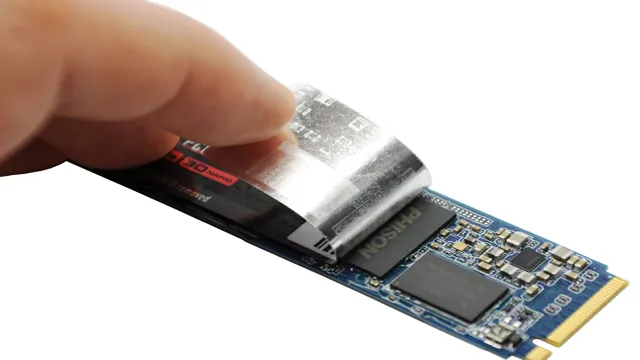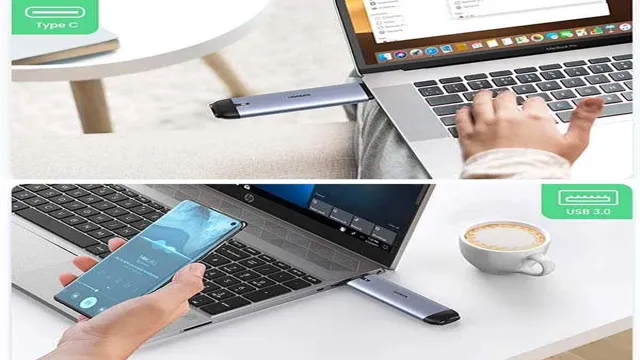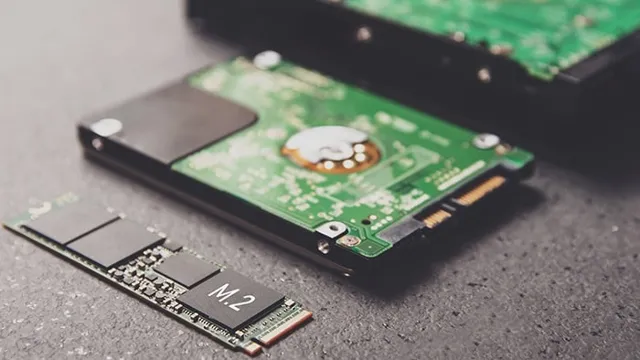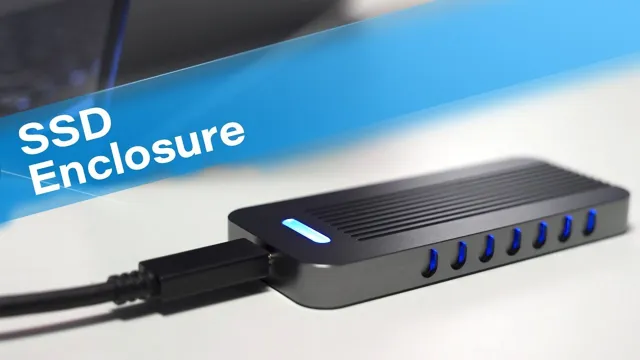If you’re looking to improve your PC’s boot and overall performance, swapping out your mechanical hard drive for a solid-state drive (SSD) may be just what you need. An SSD is faster, more durable, and quieter than a traditional hard drive. However, before you can start taking advantage of its benefits, you’ll need to make the switch.
Fortunately, we’re here to guide you through the process! In this step-by-step guide, we’ll take you through everything you need to know about switching from mechanical to SSD boot. From selecting the right SSD to migrating your data and setting up your new drive, we’ve got you covered. Whether you’re a tech-savvy pro or a newbie, you’ll find valuable information in this guide.
So, are you ready to take the leap and upgrade your PC to an SSD boot drive? Let’s dive in and get started!
Backup Your Data
If you’re planning on upgrading from a mechanical hard drive to a solid-state drive (SSD), it’s important to backup your data before making the switch. This ensures that you don’t lose any important files during the transition. There are a few different ways to backup your data, but one of the easiest and most convenient methods is to use a cloud-based backup service, such as Google Drive or Dropbox.
These services allow you to store your files securely in the cloud, so you can access them from any device with an internet connection. Alternatively, you can use an external hard drive or USB drive to backup your data. Simply copy all of your important files onto the external drive and then transfer them back to your computer after the upgrade is complete.
Once your data is safely backed up, you can proceed with switching your boot drive from the mechanical hard drive to the new SSD. This process can vary depending on the specific computer and operating system you’re using, but there are plenty of tutorials and guides available online to walk you through the steps. With a little preparation and the right tools, upgrading to an SSD can be a simple and rewarding process.
Use an External Drive or Cloud Storage
Backing up your data is one of the most important things you can do to protect your personal and professional information. One effective way to do this is by using an external drive or cloud storage. External drives are portable and can be plugged into any computer, allowing you to easily transfer and backup your data.
They are also affordable and can hold large amounts of data. Cloud storage, on the other hand, offers the convenience of accessing your data from anywhere with an internet connection. You can upload files and access them from multiple devices, and the cloud storage provider will handle the backup and maintenance of your data.
Both external drives and cloud storage have their own advantages and disadvantages, so it’s important to consider your needs and budget when choosing which method to use. Whether you choose an external drive or cloud storage, the key is to consistently backup your data to protect it from unexpected data loss.

Ensure All Files are Backed Up
Backing up your data is an essential step in protecting your digital information from unexpected events. Many people realize the importance of backing up their files only when it’s too late. A simple power outage or a hard drive failure can lead to losing all your data, including important documents, precious photos, and videos you’ve accumulated over time.
Losing such data can be devastating, especially if they are irreplaceable. Therefore, ensuring all files are backed up is a crucial aspect of safeguarding your data. By doing so, you can easily recover any files lost due to hardware failure, accidental deletion, or any other unforeseen issues.
The best way to backup important files is to keep them in multiple locations, such as an external hard drive, cloud storage, or a combination of both. With multiple backups, you can rest assured that even if you lose one copy, you’ll have another one to fall back on. Ultimately, backing up your data can give you peace of mind, knowing that your information is safe and protected.
Select Your SSD
If you’re looking to switch your boot from a mechanical hard drive to a solid-state drive (SSD), there are a few steps you need to follow. First, you’ll need to purchase an SSD that’s compatible with your computer’s hardware, and then clone your current hard drive’s operating system and data onto the new SSD. Once that’s done, you’ll need to replace the mechanical hard drive with the new SSD in your computer and set it as the primary boot drive in your computer’s BIOS.
This will ensure that your computer boots up from the new SSD instead of the old hard drive. It’s important to note that the process may vary slightly depending on the type of computer you have, so be sure to consult your computer’s manual or seek professional help if you’re unsure about any steps in the process. With a bit of patience and some careful steps, switching to an SSD as your primary boot drive can greatly improve your computer’s performance and speed.
Choose an SSD that Fits your Needs and Budget
When it comes to choosing an SSD that fits your needs and budget, there are a few factors to consider. First and foremost, you need to determine what your intended usage is for the SSD. Are you a gamer, content creator, or just looking for faster boot-up speeds? Once you have a clear understanding of your needs, you can start looking at the different types of SSDs available and their respective price points.
For those on a tight budget, a SATA-based SSD may be the way to go, offering decent speeds at an affordable price. However, if you require faster read and write speeds, you may want to consider a PCIe-based SSD. It’s important to keep in mind that while PCIe-based SSDs can offer faster speeds, they come at a higher price point.
Ultimately, it’s all about finding the SSD that meets your specific needs and fits within your budget.
Ensure Compatibility with your System
When it comes to upgrading your system’s storage with an SSD, compatibility is key. Before selecting your SSD, ensure that it is compatible with your system’s motherboard and interface (SATA, PCIe, etc.).
You can do this by checking your system’s manual or manufacturer specifications. Additionally, consider the form factor of the SSD as it needs to physically fit into your system’s SSD mounting points. Choosing an SSD with the right compatibility will ensure that it runs at its highest potential and will prevent any issues or inconsistencies.
Don’t forget to also check for any firmware updates or compatibility issues with your operating system before making your final decision. By taking these steps, you will ensure a smooth and successful upgrade for your system.
Transfer your Operating System to the SSD
If you’re looking to speed up your computer’s performance, transferring your operating system from a mechanical hard drive to a solid-state drive (SSD) is a great solution. Not only will it drastically decrease your boot time, but it will also improve your system’s overall responsiveness and load times for programs. The process of switching your boot from mechanical to SSD can seem daunting, but it’s actually quite simple.
Start by backing up your files and creating a clone of your current operating system on your new SSD. Next, change your computer’s boot order in the BIOS to prioritize your new SSD. Then, restart your computer and check that it’s now booting from the SSD.
Finally, format your old mechanical hard drive to remove the old operating system, and you’re done! With a little bit of patience, you can easily switch your boot from mechanical to SSD and enjoy faster computer speeds.
Use a Cloning Software
If you’re looking to speed up your computer’s performance, adding an SSD is an excellent option. However, transferring your operating system to the SSD can seem like a daunting task. Fortunately, you can use a cloning software to make the process easier.
With this software, you can create an exact copy of your current operating system and move it over to the new SSD. This way, you won’t have to go through the hassle of reinstalling everything from scratch. Just make sure you choose a reliable cloning software that works with your particular computer and SSD model.
In no time, you’ll be enjoying the faster boot times and improved performance of your newly-upgraded computer.
Follow the Instructions Provided by the Software Carefully
If you’re planning to transfer your operating system to the SSD, then you need to follow the instructions provided by the software carefully. First and foremost, make sure that the SSD you will be using is compatible with your system. The process of transferring the operating system to the SSD is generally straightforward, but not all software is the same, and care should be taken to avoid any mistakes that could affect your system.
Before you make any changes, back up all your important files to an external drive or cloud storage platform. Then, you can start the process of transferring your operating system. Follow the steps given by your software and allow it to complete the transfer process.
Once it’s done, restart your system and check if everything is working correctly. If there are any issues, check the troubleshooting guide provided by the software. By following the instructions carefully, you can transfer your operating system to the SSD without facing any problems.
Replace your Mechanical Drive with the SSD
If you’re looking to upgrade your computer’s storage speed, switching from a mechanical drive to a solid-state drive (SSD) is the way to go. Not only do SSDs provide faster boot times and application load times, but they also have lower power consumption and are less prone to damage from drops or shocks. So how do you switch your boot from mechanical to SSD? First, you’ll need to clone your existing hard drive onto the new SSD using software such as Acronis or Macrium Reflect.
Once the cloning process is complete, open your computer and replace the mechanical drive with the new SSD. Reboot your computer and enter the BIOS settings, where you can choose the new SSD as your primary boot device. Finally, save your changes and exit the BIOS, and your computer should now boot from the SSD.
With a few simple steps, you can upgrade your computer’s performance and enjoy the benefits of faster storage speeds.
Shut Down Your Computer and Unplug It
If you’re looking to boost the speed and performance of your computer, then replacing your mechanical hard drive with a solid-state drive (SSD) is a great place to start. Not only will it significantly improve your computer’s startup time, but it will also reduce the load times of your favorite programs and games. But before you start the process, make sure to shut down your computer and unplug it from the wall to ensure your safety.
Once you’ve done that, it’s time to get started. Simply remove your old hard drive from its slot and replace it with the SSD. Then, install your operating system and your favorite programs, and you’ll be up and running in no time.
The benefits of an SSD over a mechanical hard drive are well-documented. SSDs have no moving parts, which means they can access data much faster than a mechanical hard drive can. They’re also more reliable, consume less power, and generate less heat.
So if you’re looking to upgrade your computer’s performance, there’s no better place to start than replacing your old mechanical hard drive with an SSD. With just a few simple steps, you can breathe new life into your computer and enjoy faster load times, smoother performance, and a more enjoyable computing experience overall. So why not give it a try? You won’t be disappointed!
Remove the Mechanical Drive
If you’re tired of slow boot times and sluggish computer performance, it might be time to replace your mechanical hard drive with an SSD. Solid-state drives are capable of storing and accessing data much more quickly than traditional hard drives, which use spinning disks to read and write data. Upgrading your computer with an SSD is a simple process, but you’ll first need to remove your existing mechanical drive.
Start by powering down your computer and unplugging all cables. Then, locate your hard drive and remove it from its mounting bracket. You’ll want to be careful when handling the drive, as it is likely to be hot and fragile.
Once you’ve removed the drive, install your new SSD in its place and connect all necessary cables. Boot up your computer and you should notice a significant improvement in boot times and overall performance. Upgrade to an SSD today and experience the speed and responsiveness your computer has been missing.
Insert the SSD and Securely Mount It
If you’re tired of the slow performance of your mechanical drive, it’s time to replace it with an SSD. Once you’ve acquired an appropriate SSD, you’ll need to insert it into your computer and securely mount it. Keep in mind that your computer likely needs to be opened up and the drive bay exposed, so if you’re not comfortable doing this yourself, it may be best to seek assistance.
Once you’re ready to begin, simply slide the SSD into the drive bay and screw it in. Ensure that it’s secure and won’t shake loose during use. After this, simply connect the necessary cables and boot up your computer.
Your SSD should now be recognized and ready to use. Enjoy the considerable boost in performance that SSDs offer, and take comfort in knowing that your data is now stored on a much more reliable medium.
Reboot Your Computer and Enjoy Your New SSD Boot Drive
If you’ve recently made the switch from a mechanical hard drive to an SSD, you’re probably wondering how to switch your boot drive. Don’t worry, it’s a fairly simple process that can be done in just a few steps. First, make sure your new SSD is properly connected to your computer.
Next, you’ll need to enter your computer’s BIOS settings. This can usually be done by pressing a key during startup, such as F2 or Del. Once you’re in the BIOS settings, navigate to the boot section and select your new SSD as the primary boot drive.
Save your changes and exit the BIOS settings. Finally, reboot your computer and enjoy the lightning-fast speed of your new SSD boot drive. With just a few simple steps, you can enjoy a faster and more efficient computing experience.
Conclusion
In conclusion, switching your boot from mechanical to SSD is kind of like upgrading from a horse-drawn carriage to a Ferrari. Sure, the horse can get you from point A to point B, but the Ferrari gets you there faster, smoother, and with more style. So if you want to step up your computer game and enhance your overall experience, make the switch to SSD.
Your computer (and your patience) will thank you.”
FAQs
What is the benefits of switching boot from mechanical to SSD?
SSDs have faster read and write speeds than mechanical hard drives, which means that your computer will have faster boot times and program launches. SSDs are also less prone to failures than mechanical hard drives.
What is the process of switching boot from mechanical to SSD?
You will need to clone the contents of your mechanical hard drive onto the new SSD using cloning software. Once the cloning is complete, swap out the mechanical hard drive for the SSD in your computer’s drive bay and change the boot order in your BIOS to make the SSD the primary boot device.
Can I switch boot from mechanical to SSD myself?
Yes, you can switch boot from mechanical to SSD yourself as long as you have the necessary tools and knowledge. However, if you are not comfortable with technical tasks, it is recommended that you seek assistance from a professional.
Is it worth switching boot from mechanical to SSD?
Yes, it is definitely worth switching boot from mechanical to SSD. You will notice a significant improvement in your computer’s overall performance, including faster boot times, faster program launches, and improved system responsiveness. Additionally, SSDs are more reliable and have a longer life span than mechanical hard drives.
